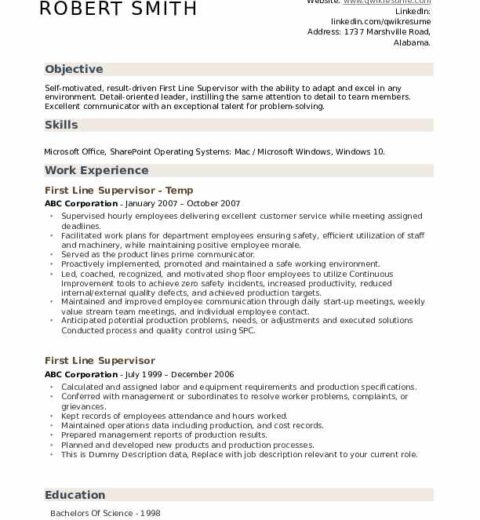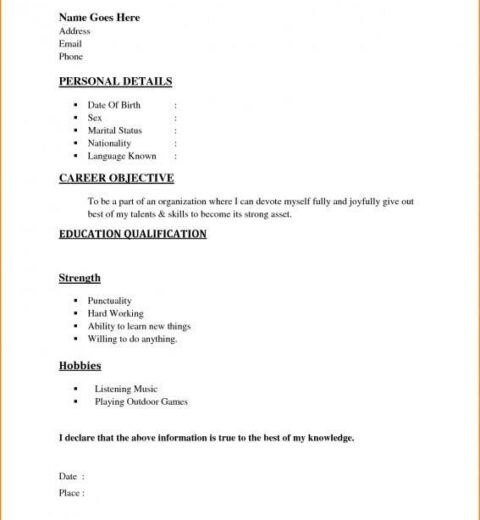In today’s competitive job market, a meticulously crafted resume is essential for securing interviews and ultimately landing the desired position. An eye-catching resume not only highlights your skills and experiences but also serves as a personal marketing tool that encapsulates your professional narrative. This comprehensive guide aims to elucidate the critical components of a well-constructed resume, offering insights into content, format, and nuances that can distinguish you from a plethora of candidates.
Understanding the Purpose of a Resume
A resume is more than a mere list of previous jobs. It acts as a first impression to potential employers, a document that embodies your professional journey, accomplishments, and aspirations. Its primary intent is to succinctly convey your qualifications and persuade hiring managers to consider you for an interview. Thus, understanding the significance of each element that composes a resume is crucial.
Types of Resumes
As you embark on the endeavor of crafting your resume, it is essential to comprehend the various types applicable to different circumstances. The three predominant formats are chronological, functional, and combination resumes. Each format serves distinct purposes:
- Chronological Resume: This traditional format lists work experiences in reverse chronological order. It is advantageous for candidates with a strong employment history relevant to the desired role.
- Functional Resume: This format emphasizes skills over work history, making it a suitable option for individuals with gaps in employment, career changers, or those with a diverse experience background.
- Combination Resume: As the name implies, this format amalgamates both chronological and functional elements. It allows candidates to showcase relevant skills while maintaining a sequential work history.
Essential Elements of a Resume
When constructing a resume, certain fundamental elements must be included. These components work cohesively to present a compelling portrait to prospective employers.
- Contact Information: At the résumé’s apex, include your complete name, phone number, email address, and LinkedIn profile, if relevant. This section should be straightforward, as it provides hiring managers with the means to contact you.
- Professional Summary: This concise statement acts as an elevator pitch, encapsulating your skills, experiences, and career aspirations. Tailoring this section to align with the specific job description can significantly enhance its impact.
- Core Competencies: A bullet-point list of your key skills and areas of expertise should be articulated here. Utilizing industry-specific terminology can demonstrate your familiarity with the field and showcase your qualifications effectively.
- Professional Experience: This pivotal section outlines your work history. Each entry should include the job title, employer’s name, location, and dates of employment. Using quantifiable achievements and action verbs can bolster your credibility.
- Education: Include your academic credentials, starting with the highest degree attained. Adding relevant certifications or ongoing education can also enhance this section.
- Additional Sections: Depending on your background, you may consider adding sections such as volunteer experience, awards, professional affiliations, or publications. These components can provide valuable context to your professional persona.
Crafting Content with Precision
Word choice and structure are pivotal in crafting compelling content. The descriptions within each section should be succinct yet descriptive, striking a balance between readability and informativeness. Avoid jargon unless it is commonplace in the industry, as clarity should prevail over complexity.
Use bullet points to enhance scannability, allowing hiring managers to locate pertinent information quickly. Each bullet point should begin with an active verb to convey a proactive approach and should ideally incorporate numerical data for substantiation of achievements.
Layout and Design Considerations
Aesthetics and layout play an essential role in engaging the reader. A clean, professional design can significantly enhance the appeal of a resume. Utilize ample white space, consistent formatting, and a legible font to facilitate reading. Ideal fonts include Arial, Calibri, or Times New Roman in 10-12 point size.
Additionally, employing bold or italics to highlight particular sections or key phrases can guide the reader’s focus. However, moderation is key—overly complex designs or excessive bolding may detract from the resume’s overall clarity.
Tailoring Your Resume for Each Application
One of the most impactful strategies in resume development is customization. Tailoring your resume for each application demonstrates your exertion and commitment. Analyzing a job description and mirroring its language can help align your qualifications with the employer’s needs effectively.
This approach not only improves relevancy and applicability but also surmounts automated Applicant Tracking Systems (ATS) that many companies employ for initial resume screenings.
Proofreading and Final Touches
Before submission, rigorous proofreading is non-negotiable. Typos or grammatical errors can severely undermine your credibility. Reading the document aloud, utilizing grammar-checking software, or enlisting a trusted peer to review your resume can mitigate these issues effectively.
In conclusion, a well-constructed resume is indispensable in navigating today’s job market. By understanding various formats, meticulously integrating essential elements, and customizing content for each application, you enhance your opportunity to captivate prospective employers. An investment in crafting an articulate and polished resume can yield significant returns in your professional journey.




